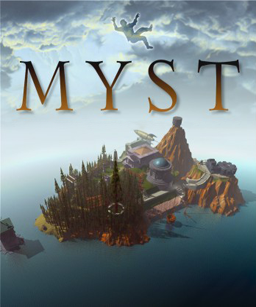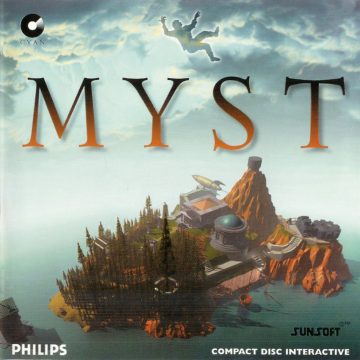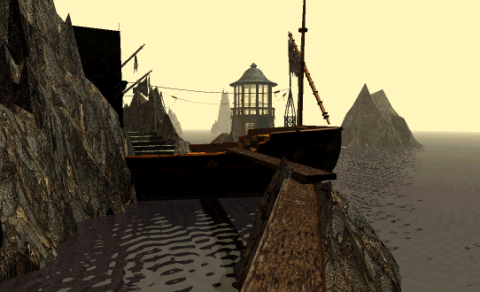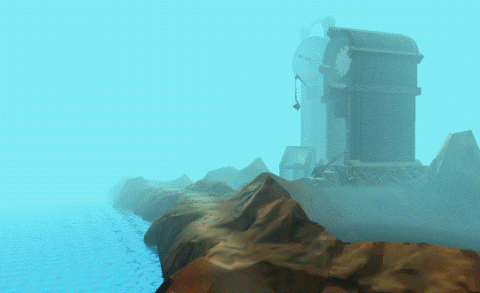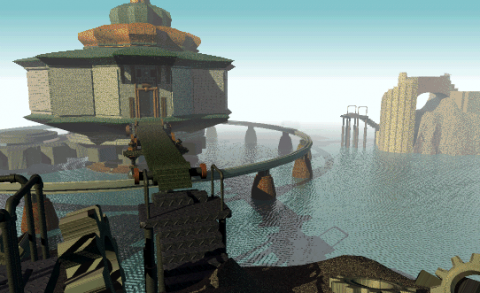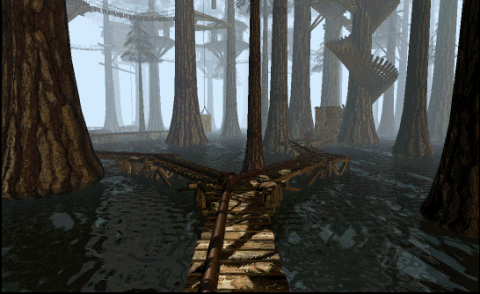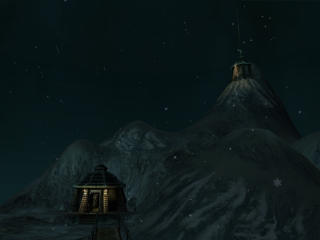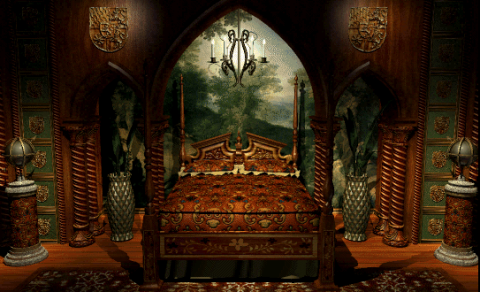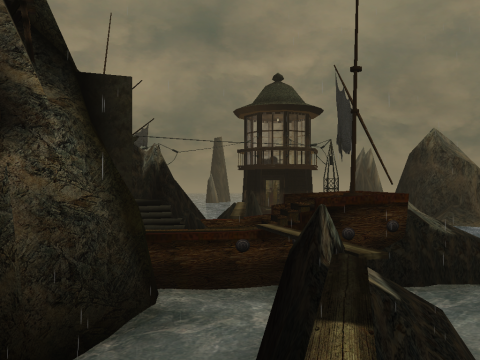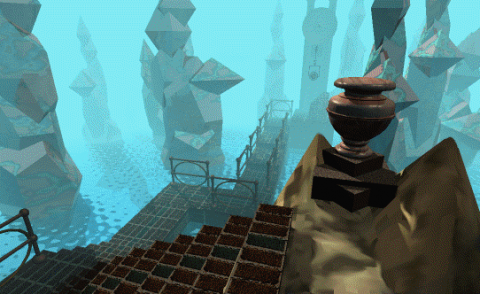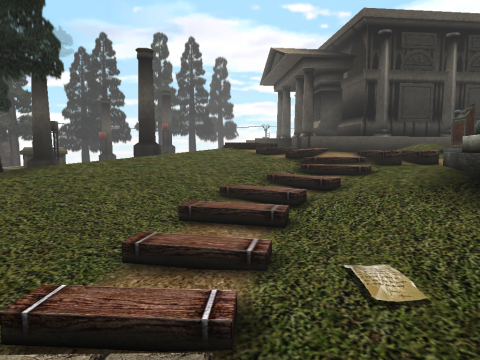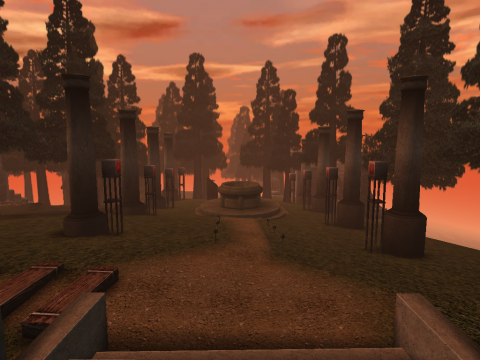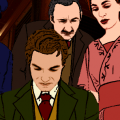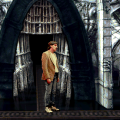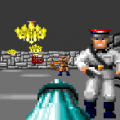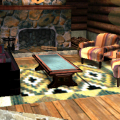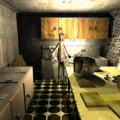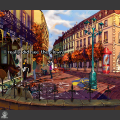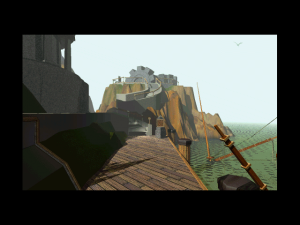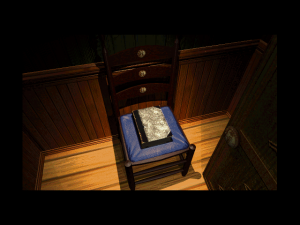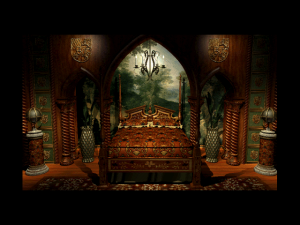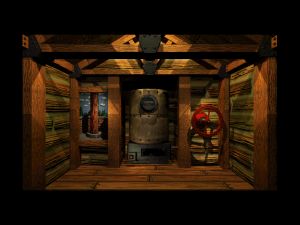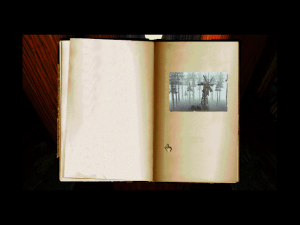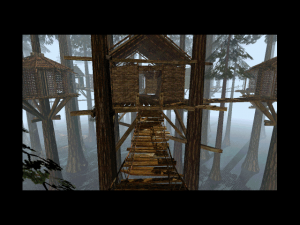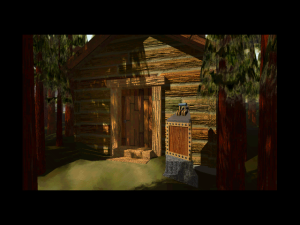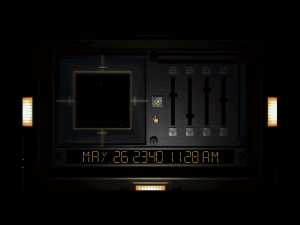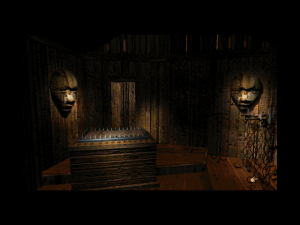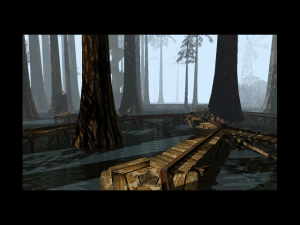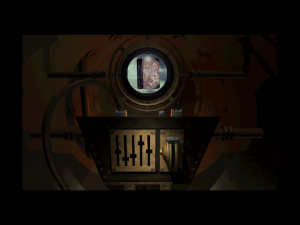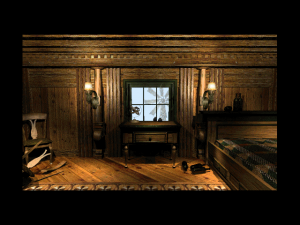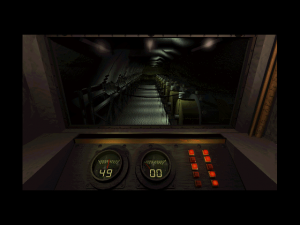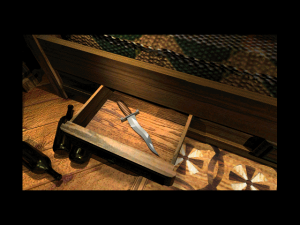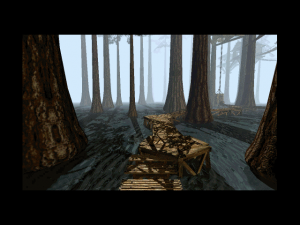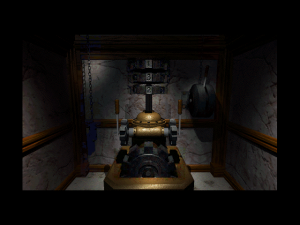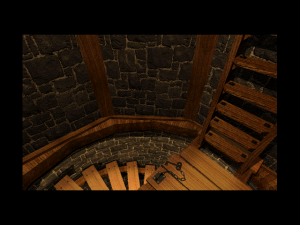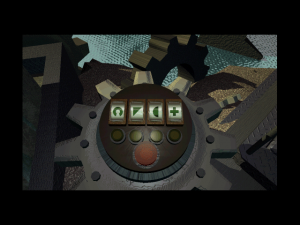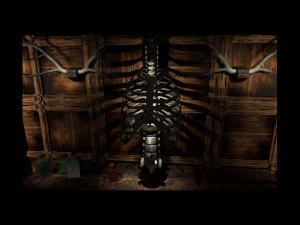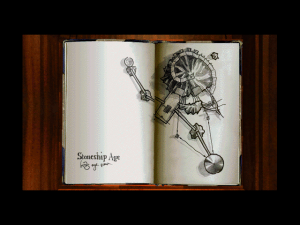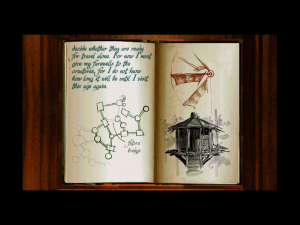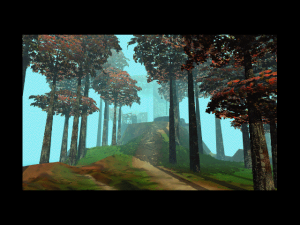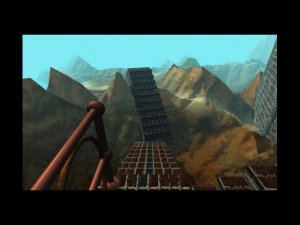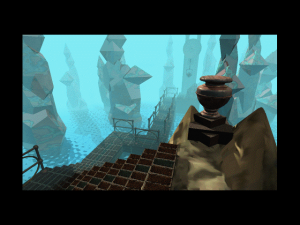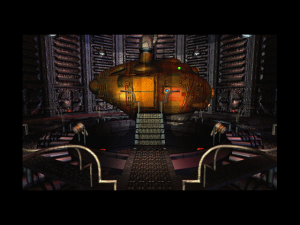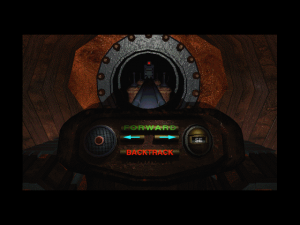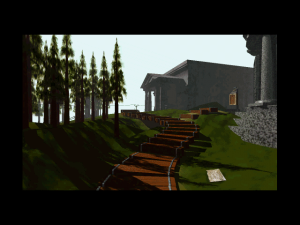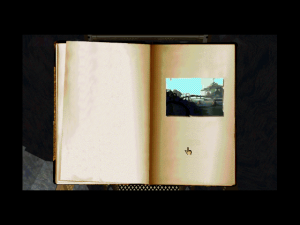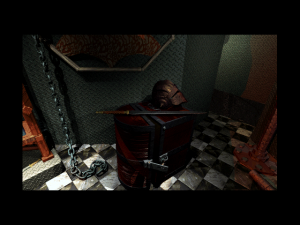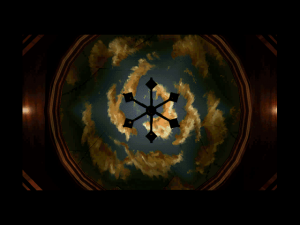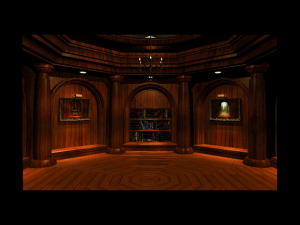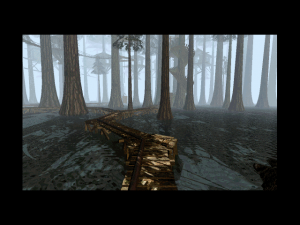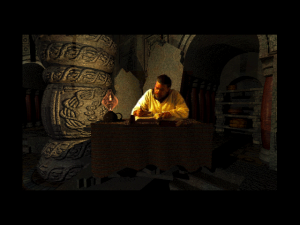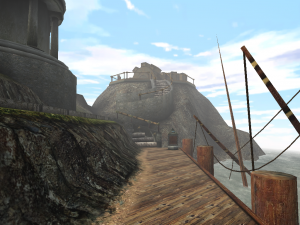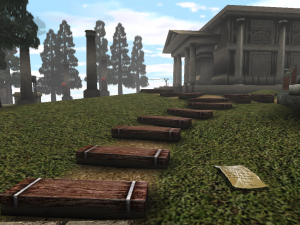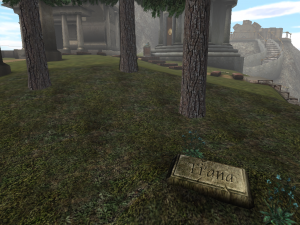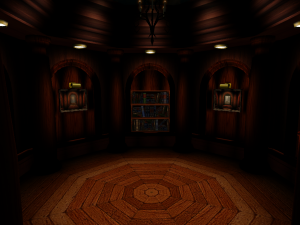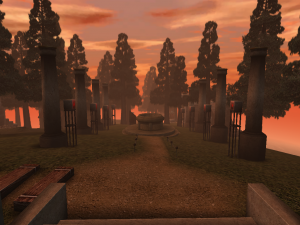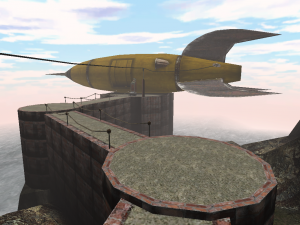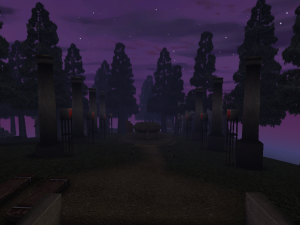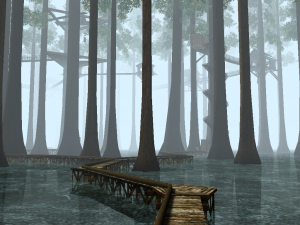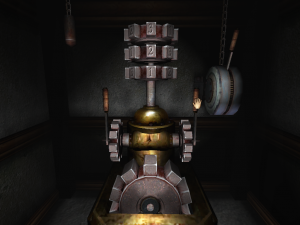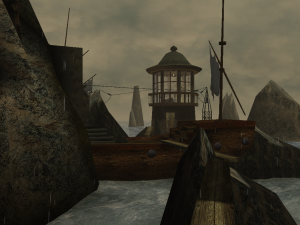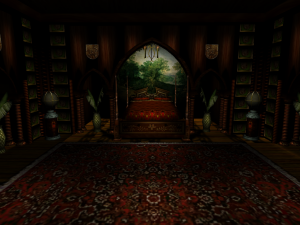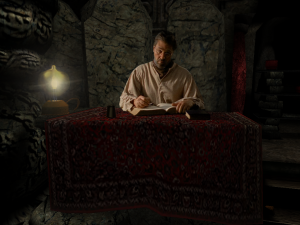There once was a time when Myst was the biggest, baddest thing in gaming. It was one of the first things you would put in your brand new computer equipped with the latest hi-tech gadget – the CD-ROM drive. The game was made by a small team of seven including Rand and Robyn Miller, the two visionaries behind the series who also happen to play the roles of the characters in the game.
Myst is about Atrus, a man who has the power to create worlds by writing books, and his two sons of very ambiguous moral character, Sirrus and Achenar. Of course, you know nothing of this at first, as your character (a nameless, faceless protagonist) gets literally dropped onto Myst Island by looking at a linking book, without a clue as to what’s going on. You do find the two brothers early on in the main building, but they are trapped in red and blue books and it is impossible to understand what they are saying. You will then have to look for more linking books cleverly hidden on Myst Island where you will find red and blue pages. Bringing those back to the colored books will clear up the static and help you understand what the brothers are saying. Their speech will eventually be clear enough for them to give you a final clue that will allow you to finish the game. You will then have to make a decision as to whom you will help escape. Each one accuses the other of foul play, but which one is telling the truth? The annoying bit about the colored pages is that you can only carry a single one at a time. That means that you have to go through every age twice to hear what both brothers have to say.
The Ages
Stoneship
A ship stuck inside of a gigantic rock, hence the name. This age requires you to restore power and lighting, tasks that will become synonymous with the Myst series. You also have to deal with flooded areas of the ship. Like most other ages of Myst, Sirrus and Achenar each have a room in here, the ones in Stoneship being the biggest. Their rooms offer a glimpse into their character, Sirrus apparently being a hypocritical violent snob and Achenar just being violent. Maybe the “no-inventory” rule wasn’t as clear-cut in the first game, since you can pick up a key in Stoneship and use it in the same room (gasp!). As if being able to hold a single page wasn’t already too much to deal with… what’s next, combining items?
Selenetic
A deserted island ravaged by meteor showers. Sirrus and Achenar don’t have rooms here since the place is completely barren, with nothing to plunder and nobody to exploit. Selenetic is a sound puzzle age. Some people hate those. First, getting there involves a pretty difficult piano puzzle, especially if you have a terrible ear for music. Once there, you have to match symbols with ambient noises heard around the island. This is one of the first ages that show the creators’ obsession with intricate sound design. That clock you can hear here is actually the modified ringing of a monkey wrench. The bubble sounds have been made by blowing into a toilet. The age ends with a classic, yet still utterly tedious first-person labyrinth. The fact that you’re stuck in a submarine thingy with only a tiny porthole to look out through and that you have to navigate by using the sub’s slow and clumsy controls doesn’t help either. And you’re going to have to go through it twice to get both colored pages.
Mechanical
A large rotating fortress in the middle of the sea built to fend off pirates. The age’s single puzzle involves rotating the fortress in order to find a way out of the place. Not that great, really. The only thing interesting about Mechanical is that the exit is literally right next to the link-in point, but you’ll have to rotate the fortress all over the place to find the combination to the exit, only to go right back where you started.
Channelwood
Now this is more like it! You start out on boardwalks in a marsh filled with the sound of frogs singing. After tinkering with a nearby windmill, you can gain access to an awesome treetop village, Ewok-style. You can find a machine that plays images of Achenar saying some really threatening-sounding stuff meant for the natives of Channelwood, but the speech is actually just gibberish; Richard Watson didn’t start inventing languages for the Myst universe until Riven.
Rime
A new age exclusive to realMyst and all the later ports of the original Myst (in which Rime is made up of 2D stills taken straight from the 3D realMyst version). In the original game, your “reward” for finishing the game is being able to go back to the ages you’ve previously visited. In realMyst and the later ports, you are given a hint as to how to find Rime. Rime is a tiny hut on a bleak iceberg. Yet the age is not entirely lifeless, as you can see whale-like beasts in the water. This age is a bit of a tie-in with other games of the series, as putting color crystals of specific shapes in a machine (a puzzle you can also find in Myst IV) will let you catch a glimpse of Riven.
Myst was created by rendering the environments in 3D and then turning it into numerous two-dimensional interactive slides with HyperCard. In other words, it’s a bit like cooking an entire loaf of bread just to keep a single piece of toast. True 3D was much too hard on the average computer in those days. The game’s claim to fame is that it contained a whopping 2500 images, 40 minutes of music and 66 minutes of Quicktime video. Some of the team’s technical issues, like paring down images from an impossible to process 500k to a manageable 80k, are also pretty quaint by today’s standards. One sign of this effort to save space is that most of these 66 minutes of video are watched in tiny windows, whether it is the actual window of an elevator or a linking book’s small frame. It’s not too bad, but it is noticeable and does little to break the illusion that the game is in fact very static.
At that point, the Miller brothers hadn’t fully thought up of the D’ni civilization, as the visuals of the game still have a lot in common with their first inspiration: Jules Verne’s The Mysterious Island (yes, that’s where the name comes from). The sound effects are obviously not as top-notch as those of the later entries, but they already show the kind of creativity and hands-on approach that makes these games great. For example, the flames are actually the sound of a car running over gravel, as real fire noises didn’t feel “fire-y” enough. The sound effect for the square buttons in the fireplace is actually an air-compressor tank attached to an industrial staple gun. This is also where the “whooshing” linking sound was born, one of the most famous sound effects in videogamedom, right next to Mario “growing up” after eating a mushroom and Solid Snake receiving a Codec transmission.
None of the puzzles in Myst are terribly complicated, but they involve the three classic rules of the franchise: restore power, look behind objects and write down any symbol that even looks at you funny. All things considered, the original game is pretty easy, especially since the other games in the franchise usually start from the same template and then add a few layers of complexity to the puzzles. Even then, the original package included three increasingly obvious hints on how to solve the game’s first hurdle: how to actually reach any of the other ages. This is the only game in the franchise to be generous enough to offer any direct hints in the box.
The game has four endings, but only one of those is the real one. The others are pretty much “Game Over”. In fact, like all other Myst games to follow, you can only die or get stuck at the very end of the game, and only by making a bad call. In other words, no grues here. Just create a different save file near the end of the game before making any important decision. Even the good ending is a cliff-hanger, as you are told that you will be called on later to undertake another important task, which will only happen if you buy the sequel.
The most interesting thing about the game is that it can be completed from start to finish in less than two minutes, but that supposes you already know what has to be done and how to do it. Of course, actually gathering this information requires you to go through all the ages and finish the game normally. It’s only after learning everything you have to learn about Myst Island that you can really realize just how close you were to victory right from the starting line (it’s a bit like that movie Cube, when you think about it). Now if this is not a great tribute to the power of knowledge, then what is?
Cyan remade the game in 2000 with Myst: Masterpiece Edition. It’s basically the same game, except using the original 24-bit colors renders instead of the pared down, 8-bit stills. The step in quality is hard to notice, which just goes to show how efficiently Cyan compressed and dithered the original renders. It also featured in-game hints, presumably for people who consider navigating the web an even greater riddle. On the other hand, realMyst, also released in 2000, is the real deal: a full 3D version of Myst including weather effects like rain, thunderstorms, sunsets and a day/night cycle.
realMyst also introduces a completely new age called Rime. Another small change is that Ti’ana’s grave was added on Myst Island, Ti’ana being Atrus’ grandmother and the main character of one of the Myst novels. realMyst was partly created as a tech demo for the then upcoming Uru: Ages Beyond Myst. It was Cyan’s way of warming up to the idea of giving a third dimension to the player.
Myst is a contender for the “highest number of ports for a video game” award. If you don’t count Myst: Masterpiece Edition and realMyst for both PC and Mac, there are Myst ports for PlayStation, Saturn, PSP, DS, iOS, PocketPC, Jaguar CD, AmigaOS, CDi and 3DO. All of them can be described with varying degrees of “meh”, mostly because pointing at stuff without a mouse feels a lot less natural. The visuals also lose some fidelity in moving from a SVGA computer monitor to television or a portable screen. The DS version lets you use little gizmos like a notebook, a camera and a magnifying glass to help you in your exploration. Apparently, none of this helps you figure out the tiny, muddy graphics, least of all point at them with the stylus in a way the game acknowledges. All in all, these ports seem pretty pointless, and new players should probably try one of the computer editions instead of some subpar port (at least every other port/remake of Final Fantasy added a little something to the mix). Anyhow, realMyst on PC or Mac is the definitive version of Myst, as it includes Rime, is the best-looking version of the game and the only one in 3D.
Myst is an excellent game, albeit one that was partly overshadowed by its many sequels and the leaps in computer technology. What used to be amazing graphics now looks merely decent. Plus, the game doesn’t have the same attention to detail that some of the later titles have. There hasn’t been much of an effort to integrate the puzzles in a coherent universe either. Mostly, the biggest reason to redact some of Myst’s praise is that a few years later Riven blew it out of the water in every way possible. And yet Myst is the one game everybody remembers and remains the top seller. On the other hand, Myst is the beginning of an idea: this is where the concept of linking books was born, but before the D’ni civilization was invented. It’s still a great place to explore and the original “surreal adventure”, full of, well, myst-ery. Compared to later games, it’s shorter and has relatively simpler puzzles, so it’s an excellent entry point for new players.

